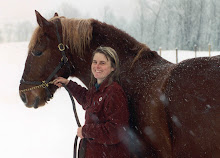Rhubarb and Rain
For the last three years, we have supplied over 200 pounds of rhubarb to one of the largest CSAs in Vermont. They can grow everything else, from artichokes to Asian greens, but they can't grow rhubarb. So they buy it from us. This CSA is as popular as Misty Knolls Farm, who has the corner on local "free-range" poultry, but that's another story.
Our rhubarb patch is about 80 feet long and is made up of plants that we transplanted from my childhood home in East Middlebury (the plants were there when my parents bought the place in 1962), and from some plants dumped on the side of the road that Kyle lugged home after upheaving the FREE! sign.
Kyle has babied these plants, keeping them weed-free, dosing them with copious amounts of aged manure, mulching them, reigning in my overzealous harvest. The plants are beautiful.
So on this day, Kyle and I harvested the rhubarb for that big CSA, who said that a truck would be coming bright and early to pick it up. We picked 190 pounds of beautiful stuff, the same stuff that we have been selling at Norwich Farmer's Market for the past four weeks.
Four hours later, after it had been harvested, washed, boxed, and weighed, I get a message on my cell phone that said: I can't find you, you need to meet me at the interstate; I don't have a cell phone.
Who does not have a cell phone in this day and age, whose job depends on constant communication?
Who does not have a cell phone in this day and age, whose job depends on constant communication?
Naturally, I 'm freaking out, calling the company that has the CSA, calling the trucking company who is supposed to be picking up my precious rhubarb. Finally, eight hours later, the trucker finds our farm and gets the rhubarb.
The next day, I get a call from the CSA,saying how they could only use 146 pounds, and could they have a discount on the rest, cuz it took a long time to pick through all of the bad stuff.
At this point, I am just trying to do my yoga breaths and not fly off the handle. I then explain AGAIN how the driver hadn't found the right address and had actually missed pick up so that he was 7 hours late. I tell them, that yes, I'll eat the 44 pounds of the precious stuff that is useless, but no, I am not going to do a discount for the time it took to pick through the rhubarb- they need to be equally responsible for the trucker's error.
To date, I have not heard about whether I will be paid at all- $380 worth, and perhaps, the last time that I will be supplying them rhubarb.
All I can say is that the "local" movement stopped treating small farms like what we are very shortly after local,sustainable, and CSA became buzzwords. I am saddened by the fact that this mega CSA won't stick by their local, small producers (the company spokesperson actually chided me and said that the can only offer quality product to their consumers). In years past, the truck has come when and where he said he would, and the CSA has been thrilled.
I'm really not sure why I'm complaining about this, other than the fact that our tiny farm now has a tarnished rep as a rhubarb supplier because the buyer gave the transportation company the wrong address. I guess I thought that local meant Vermont, but maybe I need to be even more local….
Here's a pic of my local supper...
To date, I have not heard about whether I will be paid at all- $380 worth, and perhaps, the last time that I will be supplying them rhubarb.
All I can say is that the "local" movement stopped treating small farms like what we are very shortly after local,sustainable, and CSA became buzzwords. I am saddened by the fact that this mega CSA won't stick by their local, small producers (the company spokesperson actually chided me and said that the can only offer quality product to their consumers). In years past, the truck has come when and where he said he would, and the CSA has been thrilled.
I'm really not sure why I'm complaining about this, other than the fact that our tiny farm now has a tarnished rep as a rhubarb supplier because the buyer gave the transportation company the wrong address. I guess I thought that local meant Vermont, but maybe I need to be even more local….
Here's a pic of my local supper...










